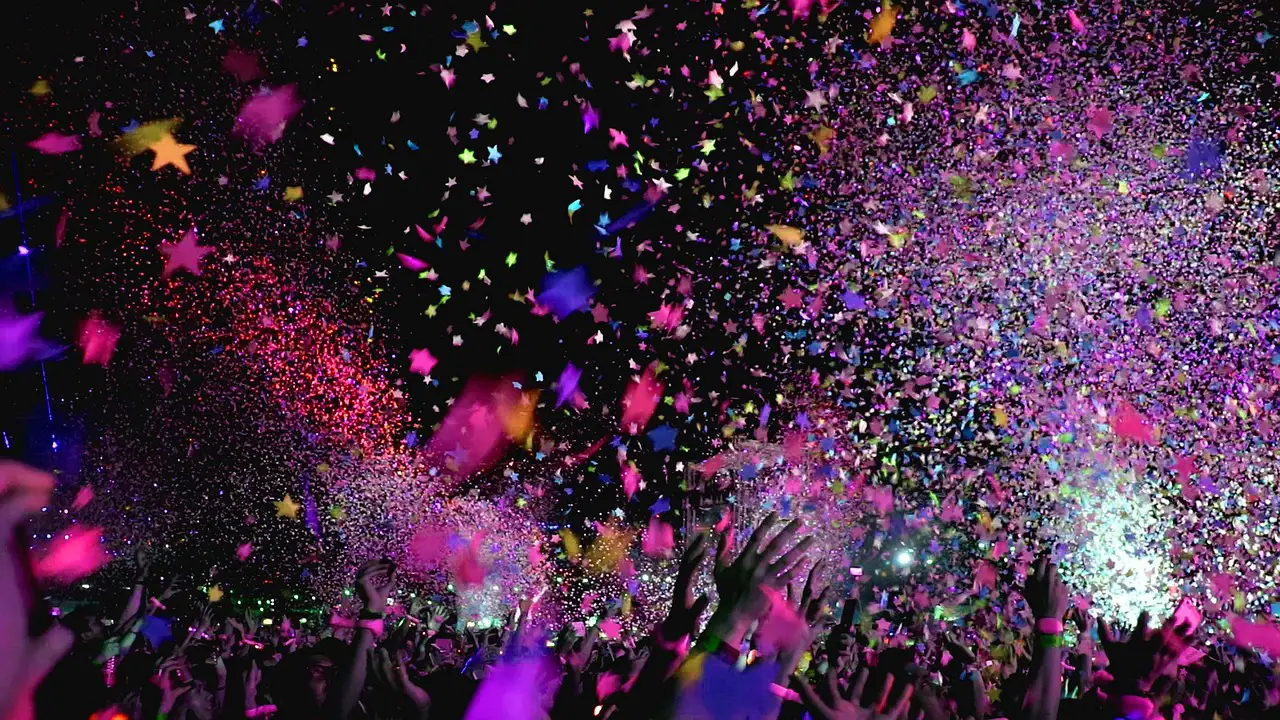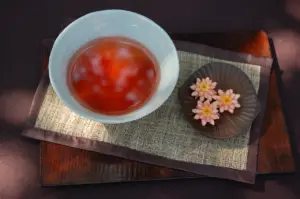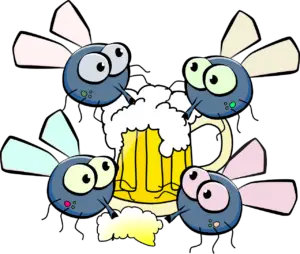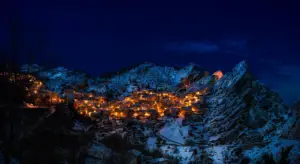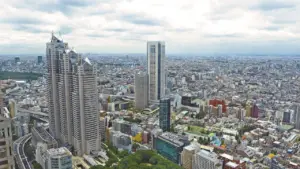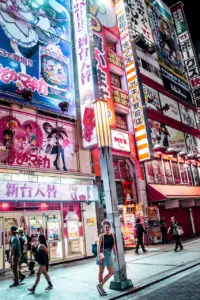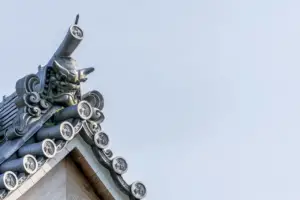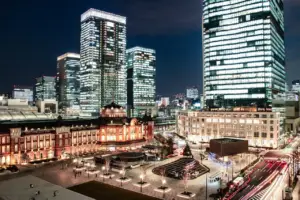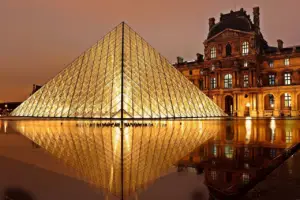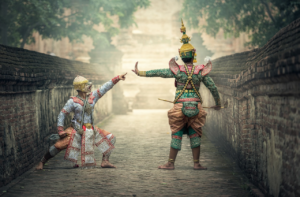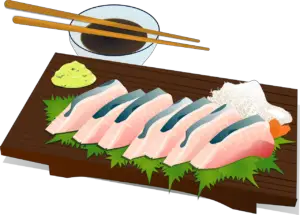Traditional dance festivals in Japan are a unique and integral part of the country’s rich cultural heritage. These festivals are celebrated throughout the year and are a display of the country’s traditional art, music, and dance. Japan is known for its graceful and rhythmic dance forms that have been passed down through generations.
The festivals provide a platform for locals and tourists to experience the beauty and richness of traditional Japanese dance. Each festival has its unique characteristics, and they are celebrated with great enthusiasm and fervor. From the Obon festival to the Takayama festival, these festivals showcase the rich cultural diversity of Japan.
The festivals are not only a source of entertainment but also serve as a means to pass down traditional art and culture to future generations. They offer a glimpse into Japan’s rich cultural history and provide a deeper understanding of the country’s values and traditions.
This article will provide an overview of some of the most popular traditional dance festivals in Japan, allowing readers to experience the grace, rhythm, and tradition of Japanese dance festivals.
Key Takeaways
- Traditional dance festivals in Japan are an integral part of the country’s cultural heritage and are celebrated throughout the year.
- These festivals provide a platform for locals and tourists to experience traditional Japanese dance, showcasing the rich cultural diversity of Japan.
- Mikoshi carriers carry portable shrines believed to house spirits of deities and ancestors, while taiko drums and flutes accompany the procession.
- Attending traditional dance festivals is a great way to experience the diversity of traditional music and dance in Japan and gain a deeper appreciation for the grace, rhythm, and tradition essential to Japanese culture.
Overview of Traditional Dance Festivals in Japan
The traditional dance festivals in Japan display a rich cultural heritage through the graceful movements, rhythmic beats, and traditional attire of the performers. These festivals are held throughout the year and are an important part of Japanese culture.
Each festival has its unique dance style, music, and costumes that reflect the region’s history, traditions, and beliefs.
One of the most famous traditional dance festivals in Japan is the Bon Odori festival. This festival is held in August and is celebrated all over Japan. The Bon Odori dance is performed to welcome the spirits of the ancestors who return to visit their families during this time.
Another popular festival is the Awa Odori festival, which is held in Tokushima prefecture. This festival is known for its energetic dance style and is performed by both professionals and amateurs. The dancers wear traditional clothing and use fans and drums to create the rhythm of the dance.
The traditional dance festivals in Japan provide an opportunity to witness the country’s rich cultural heritage and appreciate the beauty of its art forms.
Obon Festival
One of the most well-known cultural celebrations in Japan is the Obon festival, which is an annual event that honors the spirits of one’s ancestors. The festival typically takes place in mid-August and lasts for three days.
During this time, Japanese people come together to celebrate the memory of their ancestors by performing traditional dances, lighting lanterns, and visiting gravesites.
The Obon festival is believed to have originated from a Buddhist tale about a disciple who used his supernatural powers to see his deceased mother in the afterlife. The disciple discovered that his mother was suffering in the afterlife and sought the help of Buddha to release her from her suffering.
The Buddha instructed the disciple to make offerings to monks and other members of the Buddhist community. The disciple did as he was instructed and, as a result, his mother was released from her suffering.
This tale is said to have inspired the Obon festival, which is now celebrated as a way to honor and show respect for one’s ancestors.
Awa Odori Festival
Celebrated annually in Tokushima City, the Awa Odori festival is a lively event that draws thousands of participants and spectators from all over Japan. It is one of the largest traditional dance festivals in Japan, with a history that dates back over 400 years.
The festival takes place from August 12th to 15th, and is held in honor of the spirits of the deceased. The Awa Odori festival features various dance performances, including the traditional Awa Odori dance that originated in Tokushima.
The dance is characterized by its energetic and rhythmic movements, accompanied by the beat of taiko drums and the sound of shamisen, a traditional Japanese string instrument. Hundreds of dance teams, known as ren, participate in the festival, each having their unique style and costume.
The dancers wear brightly colored yukata, a casual summer kimono, and straw hats with wide brims. The festival also features food stalls selling local delicacies, such as Tokushima’s famous ramen and udon noodles.
Overall, the Awa Odori festival is a vibrant celebration of Japanese culture and tradition, providing a unique opportunity for visitors to experience the country’s rich cultural heritage.
Nebuta Festival
An iconic summer event in Aomori, the Nebuta Festival is a visual spectacle that showcases massive illuminated floats depicting mythical figures and historical scenes. Held every August, the festival attracts millions of visitors from all over Japan and around the world.
The Nebuta floats, which can be as tall as five meters and as wide as nine meters, are constructed from wooden frames and covered with Japanese paper painted with bright colors. The floats are lit up from the inside, creating a stunning effect as they are paraded through the streets at night.
The history of the Nebuta Festival can be traced back to the Edo period, when local warriors used to parade through the streets with lanterns to celebrate the end of the summer. Over time, the lanterns evolved into large, intricate floats depicting scenes from Japanese mythology and history.
Today, the festival is not only a celebration of tradition but also an opportunity for local communities to come together and showcase their creativity and craftsmanship. Visitors to the festival can also enjoy traditional music and dance performances, as well as local food and drink.
The Nebuta Festival is a testament to the enduring power of tradition in Japanese culture.
Yosakoi Festival
The Yosakoi Festival is a vibrant and energetic summer event in Aomori that features dynamic choreography and colorful costumes. This festival is a relatively recent addition to the traditional dance festivals in Japan, as it was first introduced in the city of Kochi in 1954.
Over time, the festival has evolved to become a popular event across Japan, with various teams from different regions participating in the festival. The festival is characterized by its unique fusion of traditional and contemporary dance styles.
The dancers, who are typically dressed in brightly colored costumes, perform to the sound of traditional Japanese instruments such as taiko drums and the shamisen. The choreography is a mixture of traditional Japanese dance moves and modern dance styles, such as hip-hop and jazz.
The festival attracts large crowds of spectators, who come to witness the spectacular performances of the various teams. The Yosakoi Festival is a testament to the creativity and innovation of Japan’s cultural heritage, and it remains a popular event that showcases the country’s rich tradition of dance and music.
Takayama Festival
One of the most significant cultural events in the city of Takayama is the Takayama Festival, which takes place twice a year, in spring and autumn. The festival has a history of over 350 years, and it is known for its elaborate floats, traditional music performances, and lively parades. The Takayama Festival is also a celebration of the region’s rich history and cultural traditions, which are deeply intertwined with the practice of Shintoism.
The Takayama Festival is divided into two parts, the Sanno Matsuri and the Hachiman Matsuri. The Sanno Matsuri takes place in spring, while the Hachiman Matsuri is held in autumn. During both festivals, ornate floats, called yatai, are paraded through the streets of Takayama, accompanied by musicians playing traditional instruments such as the shakuhachi flute, taiko drums, and shamisen.
The yatai are decorated with intricate wood carvings, lacquer work, and textiles, and they represent different aspects of the region’s history and culture. The Takayama Festival is a unique opportunity to witness the beauty and complexity of Japanese traditional arts and crafts, as well as to experience the vibrant energy of a community that takes pride in its heritage.
Gion Matsuri Festival
The Gion Matsuri Festival is one of the most famous traditional festivals in Japan, with a history spanning over a thousand years.
The festival consists of a month-long series of events culminating in the grand procession of portable shrines through the streets of Kyoto.
The procession is accompanied by traditional music and dance performances, showcasing the grace and rhythm of Japan’s rich cultural heritage.
Procession of Portable Shrines
A prominent feature of traditional dance festivals in Japan is the Procession of Portable Shrines. These elaborately decorated portable shrines are carried through the streets by groups of men, women, or children, known as mikoshi carriers. The procession is often accompanied by the rhythmic sounds of taiko drums and flutes, creating a festive atmosphere that is unique to Japan.
The portable shrines are considered sacred objects, believed to house the spirits of deities and ancestors. During the procession, the mikoshi carriers move the shrines in a coordinated manner, swaying and bouncing them rhythmically. This movement is believed to purify and energize the surrounding area, and bring good luck and prosperity to the community. The Procession of Portable Shrines is a colorful and lively event that showcases the beauty, grace, and tradition of Japanese culture.
| Column 1 | Column 2 | Column 3 | ||
|---|---|---|---|---|
| Purpose | To carry portable shrines through the streets | To purify and energize the surrounding area | ||
| Participants | Men, women, or children known as mikoshi carriers | Shrines believed to house the spirits of deities and ancestors | ||
| Accompaniment | Taiko drums and flutes | Bring good luck and prosperity to the community | The energetic procession of mikoshi carriers and accompanying music is a powerful symbol of unity and tradition in Japanese culture. |
Traditional Music and Dance
The Procession of Portable Shrines is just one of the many components of traditional dance festivals in Japan. These festivals celebrate the rich cultural heritage of Japan through various forms of music and dance.
Traditional music and dance in Japan are deeply rooted in history and are often associated with religious rituals and ceremonies. To fully appreciate the beauty and complexity of traditional Japanese dance, one must understand its historical and cultural significance. Each dance has its own unique story and meaning, and the movements are often symbolic of important events or beliefs.
One of the most popular forms of traditional dance in Japan is the Bon Odori, which is performed during the Bon Festival. This dance is a way for the Japanese to honor their ancestors and is usually accompanied by traditional music played on taiko drums and other instruments. Another popular dance is the Awa Odori, which originated in Tokushima and is characterized by its fast-paced movements and energetic music.
Festivals such as the Gion Matsuri in Kyoto and the Nebuta Matsuri in Aomori also feature unique forms of dance that are specific to their regions. These festivals are a great way to experience the diversity of traditional music and dance in Japan.
Traditional music and dance in Japan are not simply performances, but rather a way of preserving and celebrating the country’s rich cultural heritage. By attending these festivals and experiencing the music and dance firsthand, one can gain a deeper appreciation for the grace, rhythm, and tradition that are so essential to Japanese culture.
Three items to enjoy in traditional music and dance festivals in Japan:
-
The colorful costumes and intricate movements of the dancers
-
The energetic music played on traditional instruments such as taiko drums and shamisen
-
The opportunity to learn about the historical and cultural significance of each dance and its accompanying music.
Experience the Beauty and Richness of Traditional Japanese Dance Festivals
Experience the timeless elegance and cultural significance of traditional Japanese dance festivals, where the grace, rhythm, and tradition of this art form come to life. These festivals are hosted throughout the year across Japan, with some of the most notable being the Awa Odori Festival, the Nebuta Festival, and the Gion Festival. Each festival has its unique features, but they all showcase the beauty and richness of Japanese dance and culture.
The Awa Odori Festival, held in Tokushima, is one of the largest dance festivals in Japan. It features more than 100 dance groups, with over 1 million visitors attending every year. The Nebuta Festival, held in Aomori, is known for its spectacular illuminated floats with dancers and musicians. The Gion Festival, held in Kyoto, is a month-long celebration of traditional Japanese culture, featuring parades, food stalls, and traditional music and dance performances. These festivals provide an opportunity to experience the art and cultural significance of traditional Japanese dance firsthand, with performers dressed in beautiful costumes and showcasing intricate choreography.
Frequently Asked Questions
What is the history behind traditional dance festivals in Japan?
The history of traditional dance festivals in Japan can be traced back to the ancient Shinto rituals performed by the indigenous people of Japan. These rituals were later adopted by the imperial court and became a part of Japanese culture.
Over time, various regional variations of these dances emerged, each with their own unique styles and costumes. These dances were performed to celebrate various occasions, including harvest festivals, religious events, and imperial ceremonies.
Today, these traditional dance festivals continue to be an important part of Japanese culture, showcasing the grace, rhythm, and tradition of the country’s rich history.
How do dancers prepare for these festivals?
Dancers in traditional Japanese dance festivals undergo rigorous preparations that involve physical training, rehearsals, and learning the specific choreography of their respective performances.
The training process for these festivals typically begins several months in advance, and dancers are required to practice for several hours each day.
Additionally, the dancers must also learn about the history and cultural significance of the festival and the specific dance they will be performing.
This knowledge helps them to embody the essence of the performance and convey it to the audience through graceful and precise movements.
The preparation process is not only physically demanding but also requires a deep understanding and appreciation of the cultural traditions that underpin these festivals.
Are there any specific traditional costumes or attire that are worn during the festivals?
There are several traditional costumes and attire worn during dance festivals in Japan.
For example, during the Bon Odori festival, participants wear yukata, a light cotton kimono, and obi, a sash worn around the waist. Men often wear a jinbei, a casual summer outfit consisting of shorts and a short-sleeved top, while women wear a colorful, printed kimono with a matching obi.
Another festival, Awa Odori, features dancers wearing happi coats, a short coat with a straight hem and wide sleeves. The coats are often decorated with the name of the dance group or the festival.
Additionally, some festivals feature performers wearing elaborate costumes, such as masks and headdresses, to represent mythical creatures or historical figures.
Overall, these costumes and attire add to the cultural significance and visual appeal of traditional dance festivals in Japan.
What is the significance of the music played during the festivals?
The music played during traditional dance festivals in Japan holds significant cultural value. It serves as a means of communication and expression of traditional Japanese culture and values.
The music is often accompanied by traditional instruments such as shamisen, taiko drums, and shakuhachi flutes, which add to the uniqueness and authenticity of the festival experience. The rhythm and tempo of the music are carefully chosen to match the dance movements and convey the emotions and themes of the performance.
The music also plays a role in creating a sense of unity among the performers and the audience, forming a collective experience that celebrates Japan’s rich cultural heritage.
Are there any unique rituals or customs associated with the festivals?
Several unique rituals and customs are associated with traditional dance festivals in Japan.
One such tradition is the use of special costumes known as yukata and kimono, which are worn by the performers during the festival.
The dance itself is also steeped in cultural significance, with each step and movement representing a particular aspect of Japanese history or mythology.
Additionally, many festivals also include the use of traditional musical instruments like taiko drums and shamisen, which play an important role in setting the rhythm and tone of the dance.
Other customs include the use of elaborate floats and lanterns, which are often decorated with intricate designs and symbols that hold deep cultural significance.
Overall, traditional dance festivals in Japan are a rich and vibrant expression of the country’s cultural heritage, and offer a fascinating glimpse into the customs and traditions of this fascinating country.
Conclusion
In conclusion, traditional dance festivals in Japan are a representation of the rich culture and tradition that has been passed down from generation to generation. These festivals provide a platform for showcasing the beauty of Japanese dance, and they offer an opportunity for locals and tourists to experience the unique rhythms, grace, and traditions of Japan.
From the Obon Festival, which honors ancestors and departed loved ones, to the Gion Matsuri Festival, which celebrates the patron saint of Kyoto, each festival has its unique significance and rituals.
As observed, traditional dance festivals in Japan are an essential aspect of the country’s cultural heritage, and they are a significant attraction for tourists from all over the world. These festivals offer a glimpse into Japan’s rich history and tradition, providing a unique and unforgettable experience.
Therefore, it is crucial to continue preserving and promoting these festivals so that future generations can continue to learn and appreciate Japan’s cultural heritage. In conclusion, the traditional dance festivals in Japan offer a beautiful and unforgettable experience that should be on every traveler’s bucket list.


